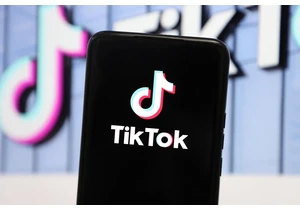On the Friday after Christmas, OpenAI published a blog post titled "Why OpenAI's structure must evolve to advance our mission." In it, the company detailed a plan to reorganize its for-profit arm into a public benefit corporation (PBC). In the weeks since that announcement, I've spoken to some of the country's leading corporate law experts to gain a better understanding of OpenAI's plan, and, more importantly, what it might mean for its mission to build safe artificial general intelligence (AGI).
What is a public benefit corporation?
"Public benefit corporations are a relatively recent addition to the universe of business entity types," says Jens Dammann, professor of corporate law at the University of Texas School of Law. Depending on who you ask, you may get a different history of PBCs, but in the dominant narrative, they came out of a certification program created by a nonprofit called B Lab. Companies that complete a self-assessment and pay an annual fee to B Lab can carry the B Lab logo on their products and websites and call themselves B-Corps. Critically, B Corp status isn't a designation with the weight of law, or even an industry-wide group, behind it — it's a stamp of approval from this specific nonprofit.
As a result, B Lab eventually felt the certification program "was not enough," says Professor Michael Dorff, executive director of the Lowell Milken Institute for Business Law and Policy at UCLA. "They wanted something more permanent and more rooted in the law." So the organization began working with legal experts to create a model statute for what would become the benefit corporation. B Lab lobbied state legislatures to pass laws recognizing benefit corporations as legal entities, and in 2010, Maryland became the first state to do so. In 2013, Delaware enacted its own version of the law. To make things somewhat confusing, the state went with a different name: the public benefit corporation.
Delaware is arguably the most important state for corporate law in the US, thanks to the Delaware Chancery Court and its body of business-friendly case law. As of 2022, 68.2 percent of all Fortune 500 companies, including many tech giants, are incorporated in the state despite largely operating elsewhere. Delaware is also the state where OpenAI plans to reincorporate its for-profit as a PBC.
The basic idea behind public benefit corporations is that they're business entities that impose a constraint on their board to balance profit maximization, a public benefit that's stated in the charter of the company, and the concerns of people impacted by its conduct.
"It's a bit of a paradigm shift," says Professor Dammann, but don't confuse a PBC with a nonprofit. "The key characteristic of a nonprofit is what we call a non-distribution constraint, meaning if a nonprofit makes a profit, they can't distribute it to their shareholders," Professor Dammann says. "If you form a public benefit corporation, there's no such non-distribution constraint. At its heart, a PBC is still a for-profit corporation."
Why is OpenAI pursuing a PBC structure?
First and foremost, a PBC structure — whether it's private or selling share on the open market — would get OpenAI out from under that non-distribution constraint. But there are likely some other considerations at play.
OpenAI hasn't publicly said this, but it appears some of its employees believe a PBC structure could protect the company from a hostile takeover if it were to go public. In a recent Financial Times report, a source within the company said a PBC structure would give OpenAI a "safe harbor" if a rival firm were to try to buy the company. It "gives you even more flexibility to say 'thanks for calling and have a nice day'," the person said.
The specific threat OpenAI likely wants safe harbor from is what's known as the Revlon doctrine, which is named after a 1986 Delaware Supreme Court case involving the cosmetics company Revlon Inc. and now defunct supermarket chain Pantry Pride, then led by CEO Ronald Perelman. "The Revlon doctrine holds that if you're a publicly traded corporation [incorporated in Delaware] and somebody stages a takeover attempt, then under certain conditions, you have to sell to the highest bidder," says Professor Dammann.
The underlying rationale behind Revlon is that a for-profit company’s sole function is to generate profits, so the board is forced to make whatever choice will return the most money to shareholders.
"We don't know for sure, but we're fairly confident that the Revlon doctrine doesn't apply to public benefit corporations," says Professor Dammann. Theoretically, PBC boards may have the flexibility to reject a takeover bid if they believe a buyer won't adhere to the social values the company was founded on. However, because "none of this has been litigated," according to Professor Dorff, it remains a purely hypothetical defense.
Moreover, it's unclear if reorganizing as a PBC would offer OpenAI more protection against a hostile takeover attempt than what it already has as a nonprofit. "I don't think this has been tested with this particular kind of structure, but my sense is that the nonprofit would not be obligated to sell even in a Revlon moment," says Professor Dorff.
"We need to raise more capital"
Publicly, OpenAI has said it needs to secure more investment, and that its current structure is holding it back. "We once again need to raise more capital than we'd imagined," OpenAI wrote in December, two months after securing $6 billion in new venture funding. "Investors want to back us but, at this scale of capital, need conventional equity and less structural bespokeness."
Unpacking what the company likely means by "structural bespokeness" requires a short history lesson. In 2019, when OpenAI originally created its for-profit arm, it organized the company using a unique "capped-profit" structure. The company said it would limit investor returns to 100x, with excess returns going to the nonprofit. "We expect this multiple to be lower for future rounds as we make further progress," OpenAI added.
It's fair to be critical of the company's claims. "You'd have to ask the investors, but I have to say that 100x is an exceptional rate or return, so the idea that you cannot get investment because of a 100x cap seems rich to me," says Professor Dorff. In fact, there are suggestions OpenAI was already making itself more attractive to investors before announcing its reorganization plan in December. In 2023, The Economist reported that the company changed its cap to increase (and not decrease as OpenAI had originally said it would) by 20 percent per year starting in 2025. At this time, OpenAI does not expect to be profitable until 2029, and racked up about $5 billion in losses last year.
"We want to increase our ability to raise capital while still serving our mission, and no pre-existing structure we know of strikes the right balance," OpenAI said in 2019. At that point, Delaware's PBC legislation had been law for nearly six years. However, the company is now arguing that a PBC structure would "enable us to raise the necessary capital with conventional terms like others in this space."
In OpenAI's defense, calling its current structure convoluted would be an understatement. As you can see from the company's own org chart, there are two other entities under the OpenAI umbrella, including a holding company that's an intermediary between the nonprofit and for-profit. Engadget was able to find at least 11 different Delaware companies registered to OpenAI. George R.R. Martin, Jodi Picoult and other members of the Author's Guild probably described it best in their copyright lawsuit against the company, calling OpenAI "a tangled thicket of interlocking entities that generally keep from the public what the precise relationships among them are and what function each entity serves within the larger corporate structure."
OpenAI did not respond to multiple requests for comment from Engadget.
"A stronger nonprofit supported by the for-profit’s success"
OpenAI's nonprofit arm does essentially two things: controls the for-profit side's business, and exists as a "vehicle" to develop "safe and broadly beneficial AGI" (artificial general intelligence).
According to the company, its current structure does not allow its nonprofit arm to "easily do more than control the for-profit." If it were freed of that responsibility — by say, handing it off to investors — OpenAI suggests its nonprofit could focus its resources on charitable initiatives, all while becoming "one of the best-resourced nonprofits in history."
To remedy the situation, OpenAI's board says the nonprofit should give up absolute control over the for-profit and take whatever degree of control comes with the amount of stock it's granted through the reorganization process. "The nonprofit's significant interest in the existing for-profit would take the form of shares in the PBC at a fair valuation determined by independent financial advisors," OpenAI says of this part of its plan.
Professor Dorff argues who controls OpenAI is critical to the company maintaining its mission. The move to reorganize the for-profit as a PBC is not controversial. "Companies do it all the time; there’s a straightforward and clear process to do that," he tells me. "What is controversial is what they're trying to do to change the nature of the nonprofit's ownership interest in the for-profit."
At the risk of oversimplifying things, OpenAI's board of directors wants to divest the company's nonprofit of two of its most important assets: control of the for-profit and its rights to the profits from AGI. "You can't just do that," says Professor Dorff. "The assets of the nonprofit must remain dedicated to the purpose of the nonprofit." There are rules that allow nonprofits to modify their purpose if their original one is made defunct, but those won't apply to OpenAI since we're not living in a world with safe (or any) AGI.
Think of it this way, what is the value of artificial general intelligence? It's not a traditional asset like real estate or the EVs sold by Tesla. AGI, as defined by OpenAI, doesn't yet and may never exist. "One could imagine it's worth all the labor of the economy because it could eventually replace human labor," says Professor Dorff. Whatever the eventual value of the technology, Professor Dorff says he's unsure "any number would enable the nonprofit to do what it's supposed to do without control."
No matter how OpenAI spins it, any version of this plan would result in a massive loss of control for the current nonprofit entity and its board.
One more thing
Something the experts I spoke to agreed on was that the laws governing PBCs aren't very effective at ensuring companies stick to their social purpose. "The legal constraints aren't very strict," Professor Dammann says, adding, "the problem with a very broad public benefit is that it's not so constraining anymore. If you're dedicated to a very broad version of the public good, then you can always defend every decision, right?"
"The dual goal of profit and public purpose doesn't really tell you how a company is going to manage those objectives," says Jill Fisch, professor of Business Law at the University of Pennsylvania Law School. "To the extent that public purpose sacrifices profits, and it doesn't have to, but to the extent that it does, how much of a sacrifice is contemplated?"
"What matters a lot in PBC governance is what the private arrangements are," Professor Dorff adds. "That is, what do the documents say?" A company's certificate of incorporation, shareholder agreements and bylaws can provide "very robust" (or very few) mechanisms to ensure it sticks to its social purpose. As Professor Dorff points out, OpenAI's blog post said "nothing about those."
Contrast that with when OpenAI announced its "capped profit" plan. It gave us a glimpse of some of its paperwork, sharing a clause it said was at the start of all of its employee and investor agreements. That snippet made it clear OpenAI was under no obligation to generate a profit. Right now, there's a lot we don't know about its restructuring plan. If the company is still serious about its mission of "ensuring artificial general intelligence benefits all of humanity" it owes the public more transparency.
What happens next?
Elon Musk's recent $97.4 billion bid to buy the nonprofit's assets complicates OpenAI's plan. In this situation, the nonprofit isn't obligated to sell its assets to Musk under Revlon or anything else — the company simply is not for sale. However, as part of OpenAI's reorganization plan, the for-profit will need to compensate the nonprofit for its independence. Musk's bid likely an attempt to inflate the price of this transaction to one higher than what Sam Altman and the rest of OpenAI's board of directors had in mind. To say Musk and Altman have had a contentious relationship since the former left OpenAI would be an understatement on a grand scale, and having an enemy who not only has the most money of any human on the planet, but also broad and largely unchecked control of the United States' executive branch data, may frustrate plans.
OpenAI also faces a ticking clock. According to documents seen by The New York Times, the company has, under the terms of its latest investment round, less than two years to free its for-profit from control of the nonprofit. If it fails to do so, the $6.6 billion it raised in new funding will become debt.
This articleAutentifică-te pentru a adăuga comentarii
Alte posturi din acest grup



If you ever needed a definitive example of how money doesn’t necessarily buy you success or taste, take a look at Amazon’s studio arm. The mega-retailer’s production division, now known as Amazon-M



You could call Shinichiro Watanabe's Lazarus a retread of his masterpiece, Cowboy Bebop. That’s not to say the show is bad — based on the five episodes I’ve seen so far, Lazar

